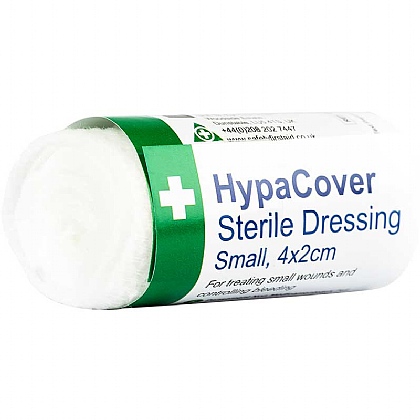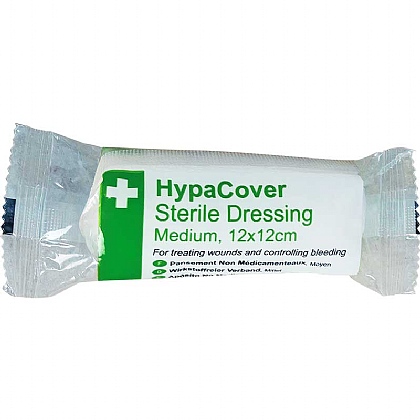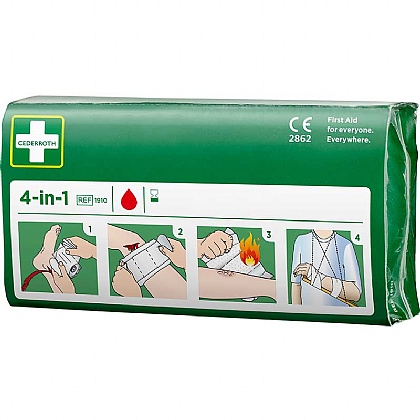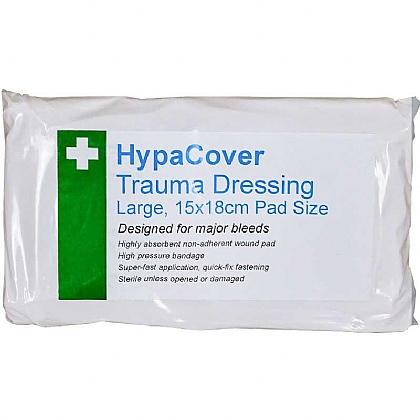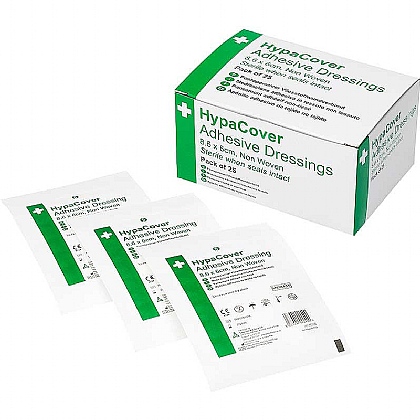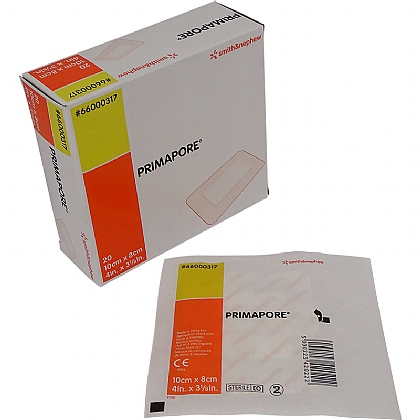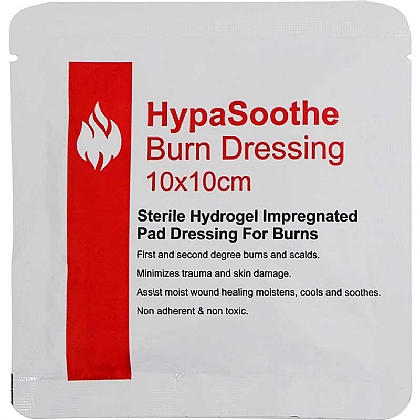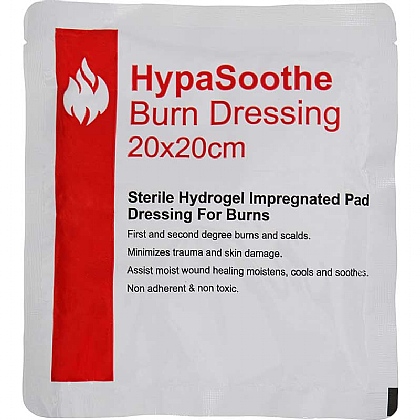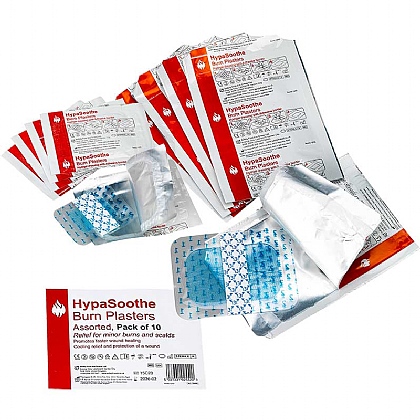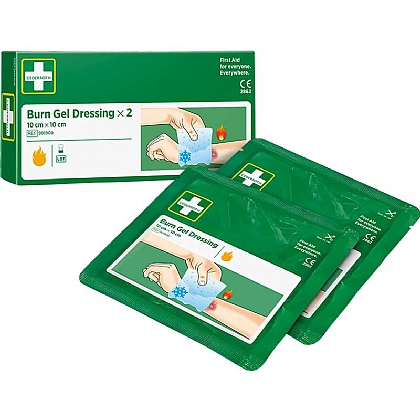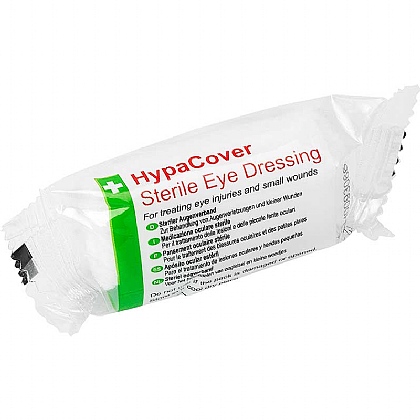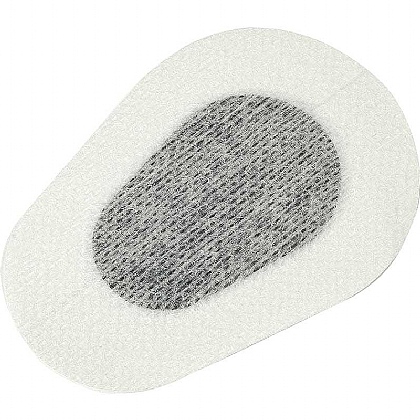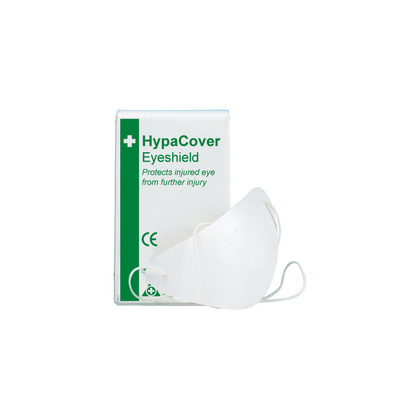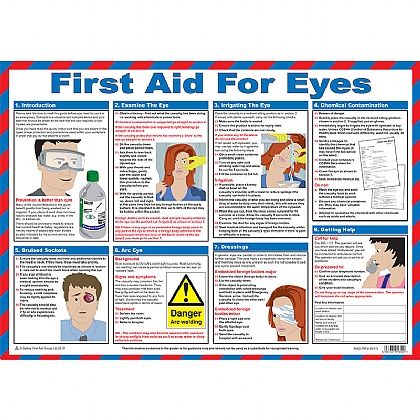
Wound healing is the body’s natural reaction to tissue injuries and involves a complex series of processes to repair damage. To ensure that healing happens as efficiently as possible, it’s important that your wound is properly protected.
Dressings are designed to help wounds heal quickly by maintaining the appropriate amount moisture and creating an environment conducive to healing. For example, if a wound is dry, a dressing that increases moisture would expedite healing. If a wound is too moist and macerated, a dressing that absorbs excess fluid and protects the surrounding skin would be necessary.
The following are some common types of wound dressings, their uses, and how to apply them.
Sterile cloth dressings
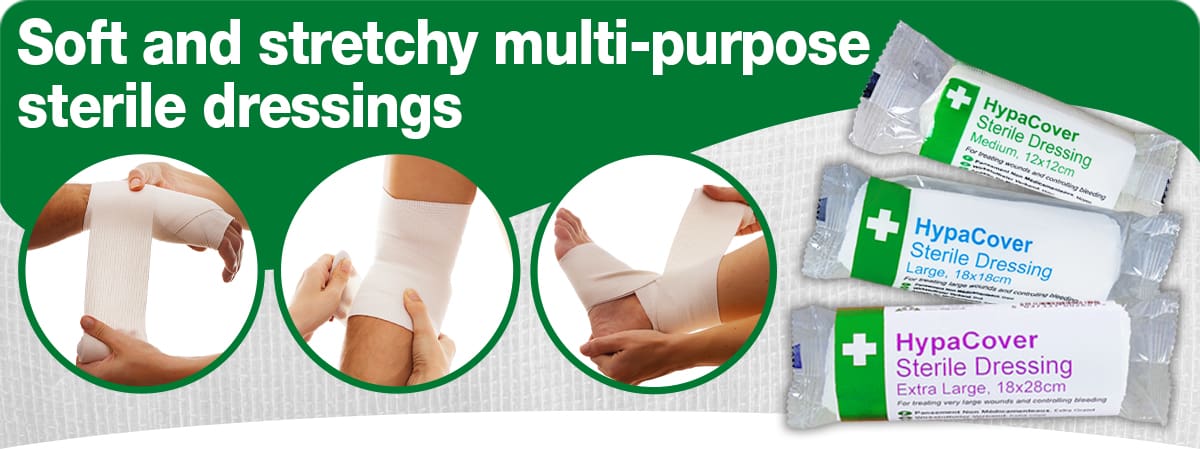
Sterile cloth or gauze dressings are the most readily available and commonly used dressings to facilitate wound healing. These dressings are usually made from polyester, cotton, woven silk or rayon, making them breathable.
How to apply sterile cloth dressings
1. Wash your hands
Wash your hands and wear disposable, non-latex gloves whenever you’re handling a dressing or wound. We recommend using power-free nitrile gloves.2. Place the dressing pad on the wound
Unwrap and unfold the dressing and place it directly on top of the wound. Ensure that it is large enough to fully cover the wound with room to spare. Keep the dressing pad in place by holding the bandage on either side.3. Secure the dressing pad
Wrap the short end of the bandage around the wound to secure the dressing pad. Then wrap the other end of the bandage around the wound, ensuring the entire dressing is covered.4. Tie the bandage to secure it
Secure the bandage over the dressing by tying the ends together in a square knot, keeping pressure on the wound.5. Check the patient's circulation
Ensure you haven’t applied the dressing too tightly by checking the patient’s circulation. You can do this by checking capillary refill time – press down firmly on the skin or a nail beyond the wound for five seconds until the area lightens in colour. Remove your finger and estimate the time it takes for colour to return to the area. If it takes longer than two seconds, the bandage has been wrapped too tightly. Continue to check circulation every ten minutes.If blood soaks through the dressing, remove it and apply a new dressing, making sure to apply pressure to control the bleeding. Once the bleeding is controlled, secure the dressing pad with the attached bandage.
Sterile cloth dressing products
Adhesive Dressings
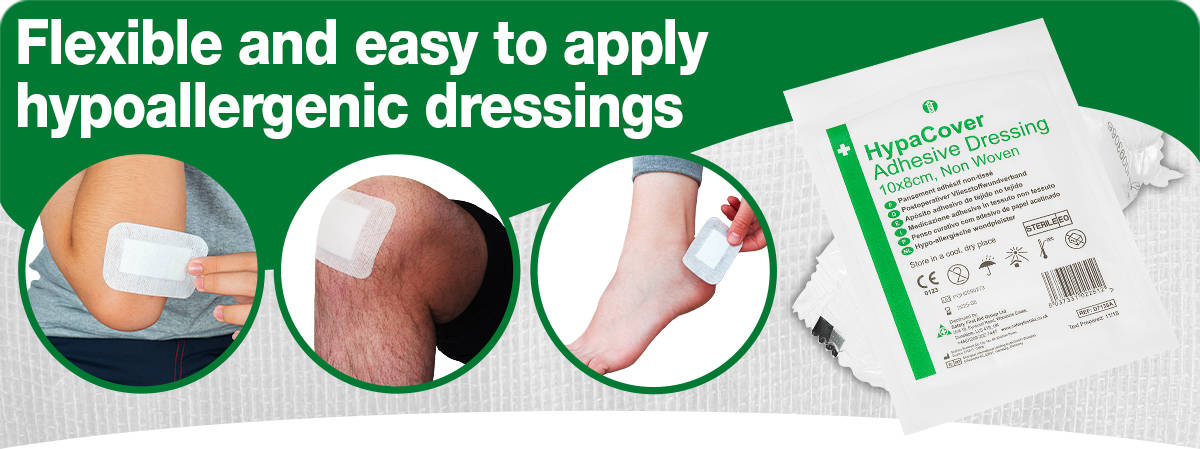
Adhesive dressings are small, flexible sheets of material with a non-sticky side and a side with a dressing pad surrounded by adhesive material.
How to apply adhesive dressings
1. Wash your hands
Whenever you’re putting your hands near a wound, you should always ensure they’re as clean as possible. Again, if you have non-latex gloves available, you should use them.2. Place the dressing pad on the wound
Place the dressing pad over the wound, ensuring that the wound is completely covered with room to spare.3. Secure the adhesive pad
Gently press the adhesive section of the dressing to the skin surrounding the wound, securing the dressing in place.Adhesive Dressing Products
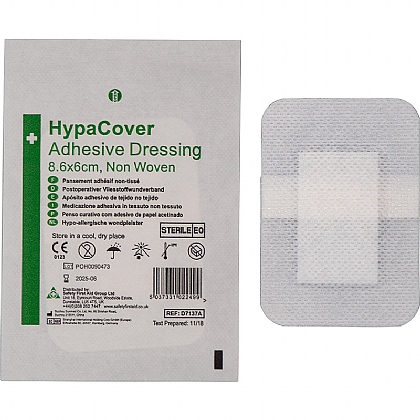 HypaCover Adhesive Dressing, Large 10cm x 8cm
HypaCover Adhesive Dressing, Large 10cm x 8cmHydrogel Dressings
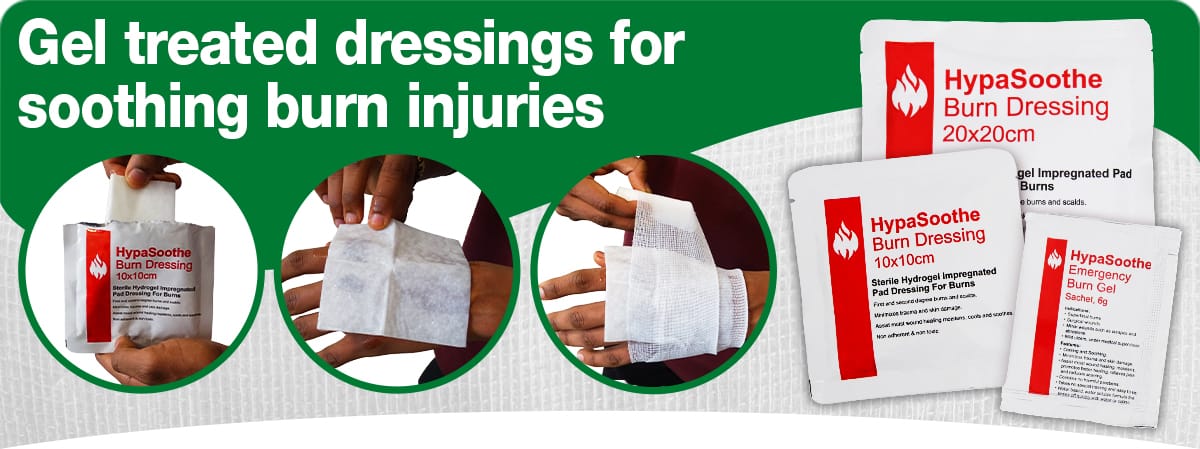
Hydrogel dressings are ideal for soothing dry wounds and wounds that are shedding dead tissue. Typically used as an emergency dressing for burns, hydrogel dressings soothe pain and help wounds to heal and fight infection. The hydrogel solution is usually between 80 and 99% glycerine or water, which helps to return moisture to dry wounds.
How to apply hydrogel dressings
1. Wash your hands
As before, it’s best practice to wash your hands before handling a dressing or going near a wound. After washing your hands, use non-latex gloves if they’re available to you.2. Place the dressing pad on the wound
Place the gel pad directly over the wound, ensuring that it is completely covered.3. Secure the dressing pad with a bandage
Wrap a conforming bandage around the dressing, ensuring it is taut enough to secure the dressing in place, but not so tight that it would affect the casualty’s circulation. Tie the ends of the bandage in a square knot.4. Check the patient's circulation
Press down firmly on the casualty’s skin near the bandage for five seconds until the area lightens in colour. Remove your finger and estimate the time it takes for colour to return to the area. If it takes longer than two seconds, the bandage has been wrapped too tightly. Continue to check circulation every ten minutes.Hydrogel dressing products
Eye Dressings
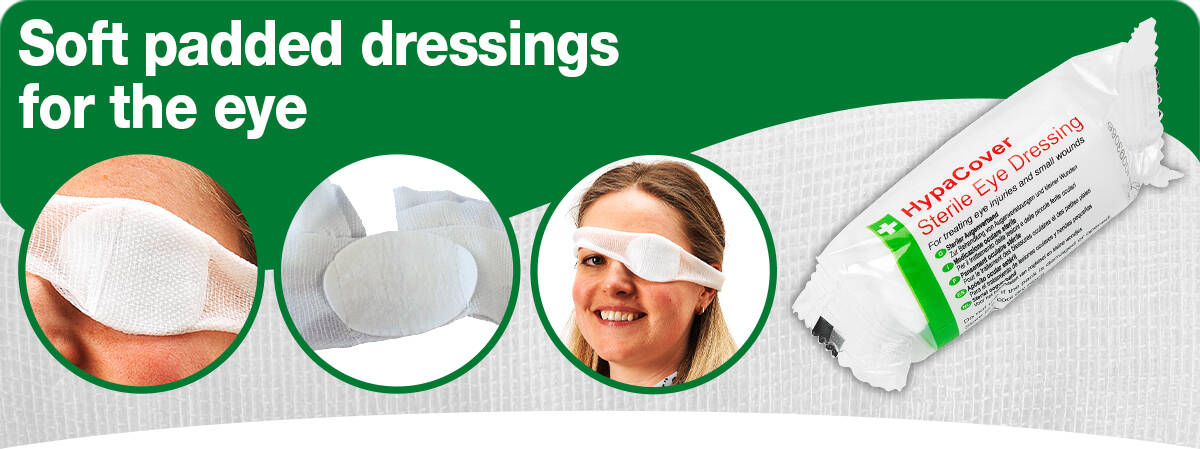
Eye dressings are shaped to comfortably fit over a casualty’s eye and are usually fitted onto a bandage for ease of application. They can be used to stop bleeding, reducing swelling and protect the eye after an injury or medical procedure.
How to apply eye dressings
1. Wash your hands
It’s especially important to wash your hands when tending to an eye injury, as it’s very easy for bacteria to enter the bloodstream through the eye.2. Prepare the affected eye for the pad
Ensure that the casualty is in a comfortable position, ideally with support for their head. Ask the casualty to close both eyes; it is important that the affected eye is not open under the pad. Continue to reassure the casualty and explain each action to them as you’re applying the dressing.3. Place the dressing pad over the eye
Position the dressing pad diagonally over the closed lids of the affected eye and place it firmly but gently against it.4. Wrap the bandage around the casualty's head
Take the bandage and wrap it around the casualty’s head, going in the direction away from the affected eye. Ensure is it pulled taut but not tight. Wrap the bandage again, bringing it below the ear and around the head a second time.5. Secure the bandage
Ensure the bandage stays in place by tying the ends in a knot or taping it down with dressing retention tape.Eye dressing products
Ensure your kits are up to date
Both the HSE and the British Standard require first aid kits to be properly stocked with sterile dressings of multiple sizes, as they are some of the most commonly used first aid items in the event of an injury. Check out our HSE and BS compliant workplace first aid kits.Find out more about what basic contents to put in your home first aid kit, learn the legal requirements for school first aid kits, and make sure you’re aware of what first aid kit you need in your workplace.
Read our other blogs for more information on first aid or contact us for further advice and information on our products.
About the author:
Jo Stokes is a writer, marketer and trained first aider at First Aid Online.
Find out more about Jo.
By Jo Stokes


